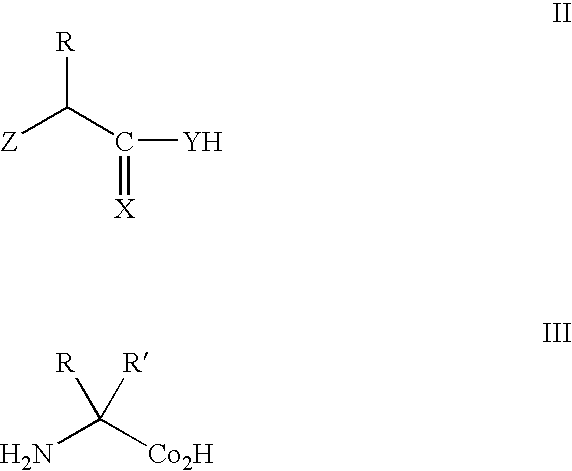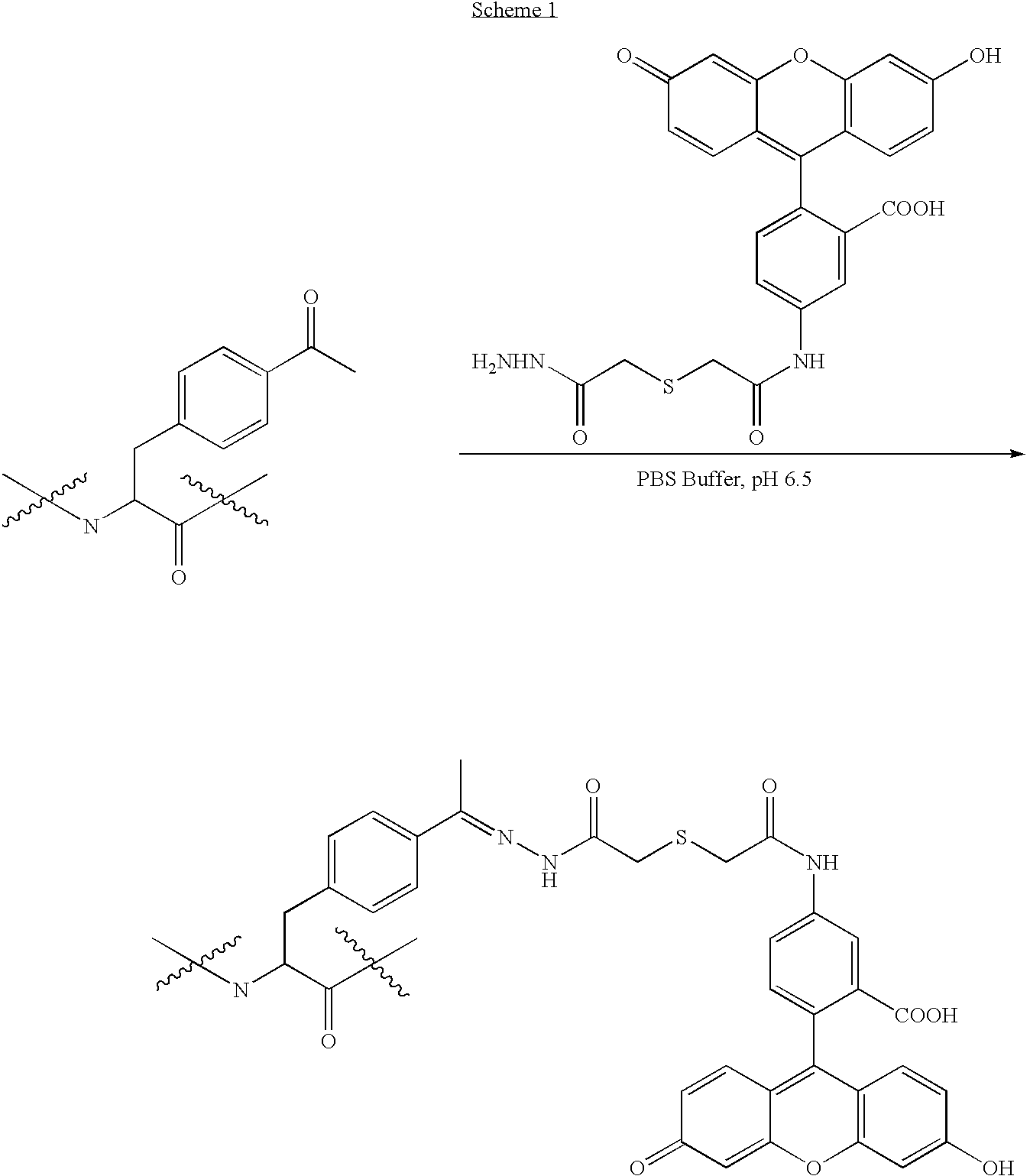Glycoprotein synthesis
- Summary
- Abstract
- Description
- Claims
- Application Information
AI Technical Summary
Benefits of technology
Problems solved by technology
Method used
Image
Examples
example 1
System for Incorporating a Keto Functional Group into Proteins
[0208]This example describes a system for preparing p-acetyl-L-phenylalanine and incorporating this unnatural amino acid into a protein.
[0209]The genetic codes of most known organisms encode the same common twenty amino acids as building blocks for the biosynthesis of proteins. Only in rare cases are selenocysteine (see, e.g., Bock, A., et al., (1991) Mol. Microbiol. 5:515-520) or pyrrolysine (see, e.g., Srinivasan, G., et al., (2002) Science 296:1459-1462; and, Hao, B., et al., (2002) Science 296:1462-1466) added. The side chains of the common amino acids comprise a surprisingly limited number of functional groups—nitrogen bases, carboxylic acids and amides, alcohols, and a thiol group, the remainder being simple alkanes or hydrophobic groups. The ability to augment the genetically encoded amino acids with new amino acids, for example, amino acids with metal chelating, fluorescent, redox active, photoactive or spin-label...
example 2
In Vivo Incorporation of Meta-tyrosine Analogues
[0233]An orthogonal TyrRS was generated for aminoacylation of the mtRNACUATyr (described in Example 1 of WO 2002 / 085923) with meta-tyrosine analogues.
[0234]Preparation of mutant TyrRS library plasmids: A library of plasmids encoding mutant M. jannaschii TryRSs directed at meta-substituted tyrosine derivatives was constructed, generally following the methods described in Example 1 of WO 2002 / 085923. Briefly, six residues (Tyr32, Ala67, His70, Gln155, Asp158, Ala167) in the active site of M. jannaschii TyrRS that are within 6.9 Å of the meta-position of the aryl ring of bound tyrosine in the crystal structure of Bacillus stearothermophilus TyrRS were mutated to all 20 amino acids at DNA level using the NNK codon scheme as described in Example 1 above. The constructed plasmid library pBK-lib contained around 1×109 independent clones.
[0235]Evolution of orthogonal tRNA-synthetase pairs for incorporation of m-acetyl phenylalanine: After 3 ro...
example 3
Synthesis of Glycoprotein Mimetics
[0238]The availability of a nonproteinogenic functional group with a unique reactivity greatly facilitates the selective chemical modification of proteins. The keto group is such a chemical handle—it is absent from the side chains of natural amino acids, and it reacts readily and selectively with hydrazide and hydroxylamine derivatives under mild conditions in the presence of the common amino acids. See, e.g., Cornish, V. W, et al., (1996) J. Am. Chem. Soc. 118:8150-8151 and references therein. The keto group has been included in peptides by solid phase peptide synthesis, and coupled with nucleophilic saccharide derivatives to construct neoglycopeptides. See, e.g., Rodriguez, E. C., et al., (1998) J. Org. Chem. 63:7134-7135. We recently developed a general method that allows for the site-specific incorporation of unnatural amino acids into proteins directly in living cells (See, e.g., WO 2002 / 085923; and, corresponding application PCT / US03 / 32576 ent...
PUM
| Property | Measurement | Unit |
|---|---|---|
| Energy | aaaaa | aaaaa |
| Electrophilic | aaaaa | aaaaa |
Abstract
Description
Claims
Application Information
 Login to View More
Login to View More - R&D
- Intellectual Property
- Life Sciences
- Materials
- Tech Scout
- Unparalleled Data Quality
- Higher Quality Content
- 60% Fewer Hallucinations
Browse by: Latest US Patents, China's latest patents, Technical Efficacy Thesaurus, Application Domain, Technology Topic, Popular Technical Reports.
© 2025 PatSnap. All rights reserved.Legal|Privacy policy|Modern Slavery Act Transparency Statement|Sitemap|About US| Contact US: help@patsnap.com



